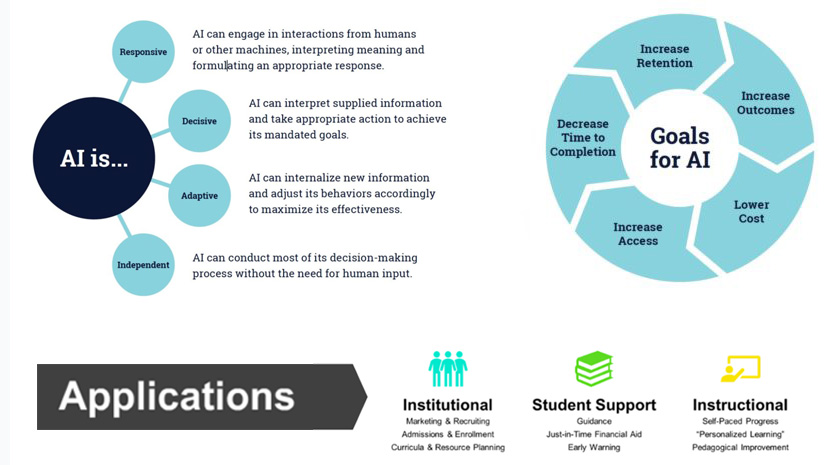Mikel Amigot | IBL News
“In education, AI is still a sleeping giant,” researcher Dr. Tony Bates wrote in a must-read article.
Today, one of the most extended cases of AI in teaching and learning lies in chatbots. These intelligent tutoring systems, that guide conversations or “chat” through text or voice interactions, are on the rise.
In a recent interview with IBL News, David Joyner, Associate Director of Senior Experience at the Online Master of Science Computer Science and instructor of the program, commented on the new role of Georgia Tech’s AI-agent –formerly known as Jill, and now named ATA– on how it is connecting students to other learners in the same class. “It’s a social TA (Teacher Assistant),” he explained.
Chatbots have become a common tool for banks and large finance and marketing companies as a way to reduce costs and response times. Now, a growing number of colleges and universities use this technology.
Two examples:
- Australia’s University of Adelaide announced that students received responses 13 times faster, and learners’ approval of the quality of service increased by 60 percent, after deploying a chatbot to deal with admissions questions in 2018.
- Western Governors University, or WGU, in 2018 received a $750,000 award from the National Science Foundation to use machine learning in order to improve interactions with students and help them with the decision-making process, i.e., to find programs.
Among many others, companies like Oracle, AdmitHub, and Ivy.ai, also provide this type of solution.
As AI-based adaptive technology advances, systems will deal with several tasks, as Tony Bates reminds.
At least, they will:
- Provide teaching content to students and simultaneously provide support by giving adaptive feedback and hints to solve questions related to the content, as well as to detect students’ difficulties/errors with content or exercises.
- Curate learning materials based on students’ needs, such as providing specific recommendations regarding types of reading materials and exercises, along with personalized courses of action to aid in the students’ learning experience.
- Facilitate collaboration between learners by providing automated feedback, generating automatic questions for discussion, and an analysis of the process.
It is undeniable that there are inflated expectations for AI –a term that is often incorrectly used to describe any computational activity.
Beyond the extreme hype, there are clear areas of application. AI enables adaptive learning by recommending personalized content, predictive analytics, automated feedback and support in many conversations.
Artificial Intelligence is not a panacea for education. However, by having access to massive amounts of information and analyzing these data sets through algorithms and computational power, innovative software organizations can develop worthwhile applications.

 En Español
En Español




















